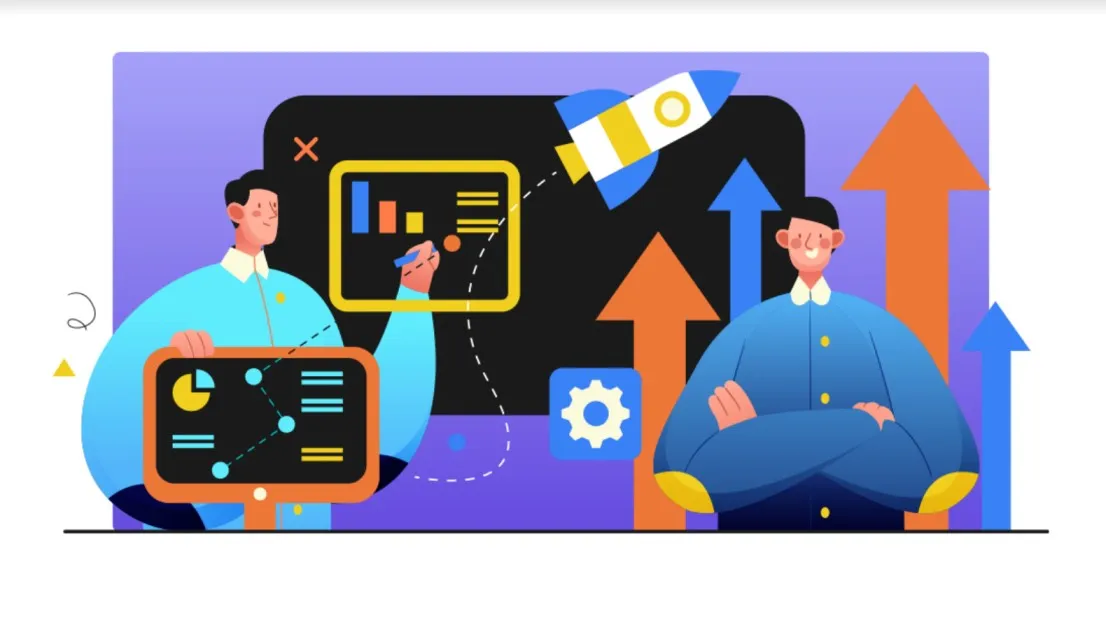3 Tactics Tech Leads Can Use to Turn Dev Talk into Meaningful Business Insights

Tips for being an effective tech leader

Tips for being an effective tech leader

Tech leads often have the responsibility for bridging the gap between development and business. Essentially, this means you will have to translate complex technical jargon into language that non-technical people will understand. The good news is that there are a few ways to do it.
In this article, we will present three techniques that can enhance communication between technical leads and their business counterparts, which are: using Development Intelligence* (*flexible development stack analytics) to your benefit, translating technical terms into plain language, and using analogies and examples to explain complicated concepts. Applying these three strategies will ensure that everyone is on the same page, no matter their level of technological understanding.
Using Development Intelligence to benefit all software development stakeholders
The use of development intelligence is a great way for tech leads to connect with the business. By tracking key metrics and performance indicators, you can gain valuable insights into the development process, and surface key data-based facts unseen before. Based on this information, you can decide where to focus your efforts, what might need improvement, and communicate effectively with key stakeholders to serve the engineering organization and beyond.
Consider your development team's cycle time (the most popular way to calculate cycle time is Lead Time for Changes introduced by the “Accelerate” book and DevOps Research and Assessment metrics also known as DORA Metrics). This metric measures the time it takes from assignment to completion of a task. The increase in cycle time may signal overloaded teams or bottlenecks in the process. By understanding what these trends mean, you can adjust your processes and resources. Furthermore, you can provide your management with fact-based insights, which could lead to greater allocation of resources.
Use DORA Metrics Dashboard template for free

Additionally, Development Intelligence can be used to predict future trends. Customer support requests, for instance, could be an indication that there are going to be more bugs in the next release.
If you remain proactive and aware of these trends, you can address issues before they cause major problems and proactively manage your stakeholders’ expectations.
Use Software Quality Insights template for free

The overall objective of development intelligence is to increase the efficiency of your development process and help you communicate with stakeholders more effectively.

Translating technical terms into plain language
Another way to effectively communicate with the business is by translating technical terms into layman's terms. This can be especially important when presenting data or results to non-technical people. By using simple, easy-to-understand language, you can ensure that everyone is on the same page.
In general, it's important to use language that everyone can understand. This means avoiding jargon and technical terms whenever possible. If you need to use a technical term, make sure you define it in plain English. . By doing this, you ensure that everyone is able to follow along and understand the conversation.
For example, let's say you're looking at the cycle time for your development team. Rather than saying "The cycle time for our team is increasing," you could say "It's taking our team longer to complete tasks." and explain the reasons behind and the ways to accelerate the process and reduce associated costs. This change in wording makes it much easier for non-technical people to understand what's going on and why it matters.
This tactic can also be used when discussing development tools and technologies. Instead of using Technical terms like "version control" or "continuous integration", you could explain them as "tools that help manage changes to code over time" or "a process that automatically checks code for errors and integrates it into the main code base". By translating these technical terms for the layman, you'll ensure that everyone is on the same page.
Using analogies and examples to explain complex concepts
Another tactic that technical leads can use to effectively communicate with the business is to use analogies. Using this method can be a very helpful tool for explaining complex concepts in a way that can be understood by everyone.
As an example, let's look at technical debt. Technical debt is a common problem that development teams have to deal with. In order to make sure that management understands this issue, it is important to be able to communicate it effectively.
The technical debt could be compared to a mortgage, for instance. The team had to accept that there would be some rework involved in delivering some features sooner, which would in turn cost the engineering organization more time and money - although this could be viewed in the perspective of financial interests. It is a known fact that the longer it takes to pay back the debts, the higher the interest rate and the total cost will be.
As a whole, being a tech lead boils down to having good communication skills. It will be easier for you to ensure that all your audience members understand what you are saying if you use the methods described above. As a result of doing this, you will be able to avoid getting bogged down in technical jargon and ensure that everyone is on the same page. Thus, the next time that you have a conversation with a non-technical audience, make sure you try out one of these methods. I bet you'll be surprised with their efficiency.
If you are a technical leader, what do you find to be the most effective method of communicating with non-technical people? We'd love to hear what you think by Tweeting us !